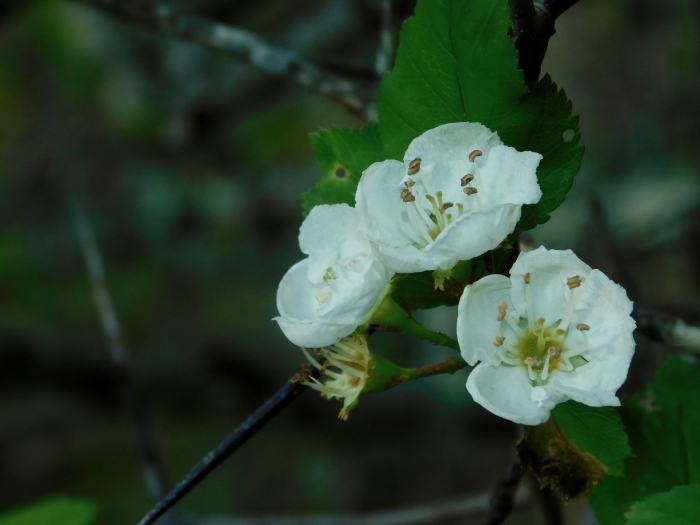Summer Haw
(Crataegus flava)
Summer Haw (Crataegus flava)
/
/

Michael J. Papay
CC BY 4.0
Image By:
Michael J. Papay
Recorded By:
Copyright:
CC BY 4.0
Copyright Notice:
Photo by: Michael J. Papay | License Type: CC BY 4.0 | License URL: http://creativecommons.org/licenses/by/4.0/ | Rights Holder: Michael J. Papay | Publisher: iNaturalist | Date Created: 2022-05-05T07:48:45-07:00 |























Estimated Native Range
Summary
Crataegus flava, commonly known as Summer Haw or Yellowleaf Hawthorn, is a deciduous shrub or small tree native to the open woodlands and forest edges of the southeastern United States, ranging from Virginia to Florida and west to Mississippi. It typically grows to a height of 15-30 feet (4.5-9 meters) with a similar spread, and is characterized by its dense, rounded crown and thorny branches. The leaves are glossy green, turning yellow in the fall, which adds to its ornamental value. The flowers are white and bloom in late spring, followed by clusters of yellow to red fruits, which are small pomes that can be used to make jellies and jams, although they are mealy and dry.
Summer Haw is valued for its hardy nature and is used in urban planting, border planting, and as a specimen tree. It is adaptable to a variety of soil types, but prefers well-drained soils and can tolerate both full sun and partial shade. While it is not a common choice for large-scale cultivation, it offers ecological benefits by providing food for wildlife. The wood is hard and can be used for making small tools. Gardeners should be aware that it can be susceptible to leaf spot and rust diseases, and may also be prone to fire blight. Care should be taken to avoid confusing this species with C. lacrimata due to past taxonomic errors.CC BY-SA 4.0
Summer Haw is valued for its hardy nature and is used in urban planting, border planting, and as a specimen tree. It is adaptable to a variety of soil types, but prefers well-drained soils and can tolerate both full sun and partial shade. While it is not a common choice for large-scale cultivation, it offers ecological benefits by providing food for wildlife. The wood is hard and can be used for making small tools. Gardeners should be aware that it can be susceptible to leaf spot and rust diseases, and may also be prone to fire blight. Care should be taken to avoid confusing this species with C. lacrimata due to past taxonomic errors.CC BY-SA 4.0
Plant Description
- Plant Type: Shrub, Tree
- Height: 20-30 feet
- Width: 15-20 feet
- Growth Rate: Moderate
- Flower Color: White
- Flowering Season: Spring
- Leaf Retention: Deciduous
Growth Requirements
- Sun: Full Sun, Part Shade
- Water: Medium
- Drainage: Medium
Common Uses
Bee Garden, Bird Garden, Low Maintenance
Natural Habitat
Open woodlands and forest edges
Other Names
Common Names: Yellow Hawthorn , Summer Haw , Yellowfruit-Thorn , Summer Hawthorn
Scientific Names: Crataegus flava , Anthomeles flava , Anthomeles glandulosa , Anthomeles turbinata , Crataegus caroliniana , Crataegus cirrata , Crataegus elliptica , Crataegus elliptica , Crataegus flava subsp. trilobata , Crataegus flava var. elliptica
GBIF Accepted Name: